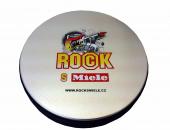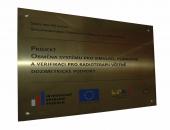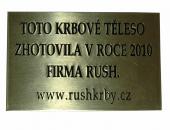Printing on Metal and Glass
These materials require special two-component coats which are more expensive and take a longer time to cure than single-component ones. When printing on metal and glass you therefore need to reach deeper into your pocket than if the same printing were performed on a plastic or another, more print-friendly surface.

Methods used:
- Direct screen printing with the maximum resolution of the raster (if any) of 65-85 lpi depending on the nature of the order.
- Rotary screen printing with the raster of 65 lpi.
- Laminated solvent-based digital printing for small-volume, full-colour applications.
We would advise against:
- Excessive pressure on the delivery date when placing the order because the two-component coat reaches its actual characteristics as late as one week after application.
- Careful handling and adequate transport are possible as early as 48 hours after application but it is only much later that the print can withstand a full load.







